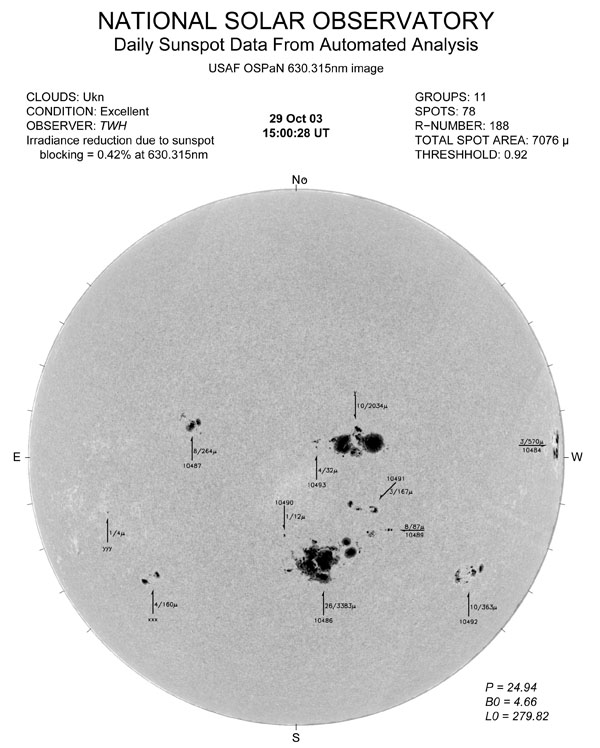 |
The Air Force Research Laboratory's Space Hazards Branch, in partnership with the
National Solar Observatory at Sacramento Peak, developed a prototype instrumentation
and software for the Improved Solar Observing Optical Network (ISOON). ISOON was to
have replaced the existing SOON system which was originally designed and deployed
in the 1970's for space weather specifications and forcasting. As envisioned, ISOON
was to have featured autonomous, rapid-cadence solar imaging spectroscopy and imaging
spectropolarimetry at four sites around the world, while transmitting solar images
in near-real time to central analysis facilities at Air Force Space Command and NOAA/SEC
(now SWPC). The ISOON technical approach was to retain the front end of the existing
SOON telescope but replace the optical bench, birefrigent, and spectrograph with a
dual Fabry-Perot filter system, CCD array detector, and secondary optics contained
in a pod behind the main telescope tube. Planned ISOON products included full-sun
images (on 1-arcsecond pixels) in H-alpha (acquired 1 per minute), and line-of-sight
magnetic field (1 per 3 hours), as well as parametrized data such a flare brightness,
location, area, and times of onset and maximum. Following its development and prior
to its deployment the USAF cancelled the ISOON program. The current dataset available
from NOAA/NCEI includes image from the protoype ISOON system at Sacramento Peak from
2003 to 2012. |